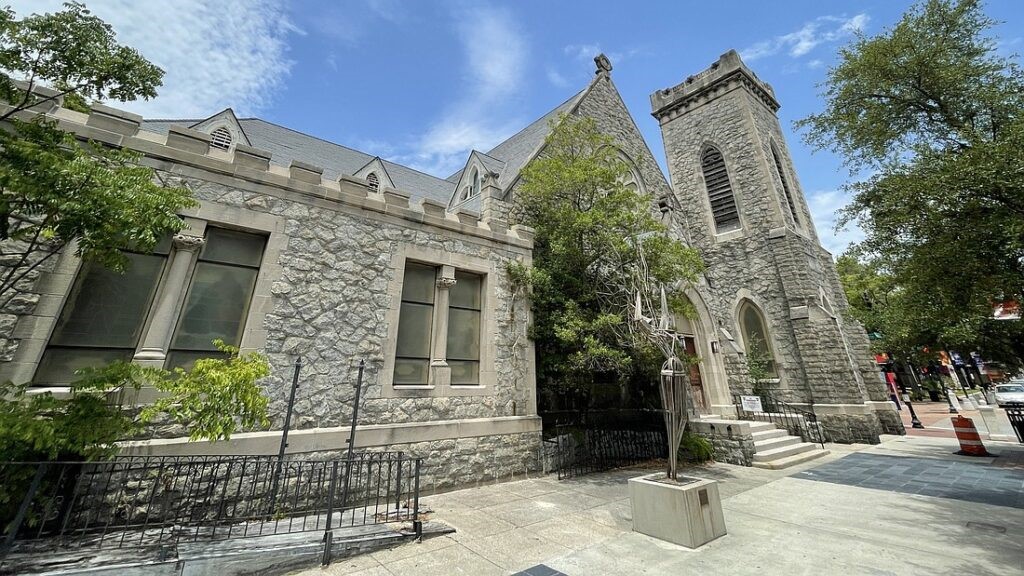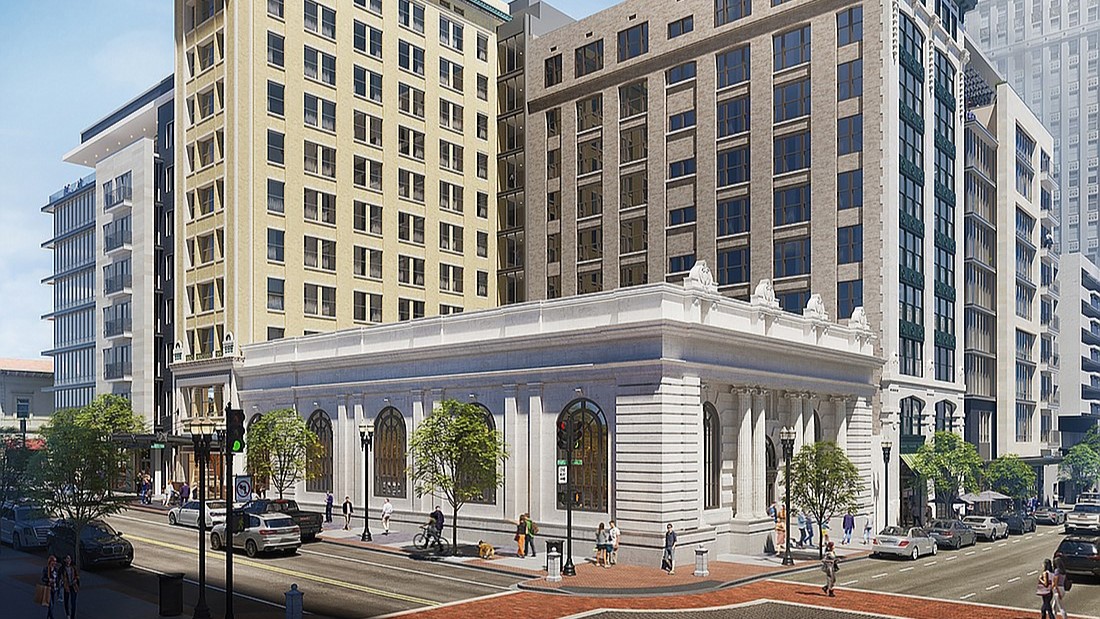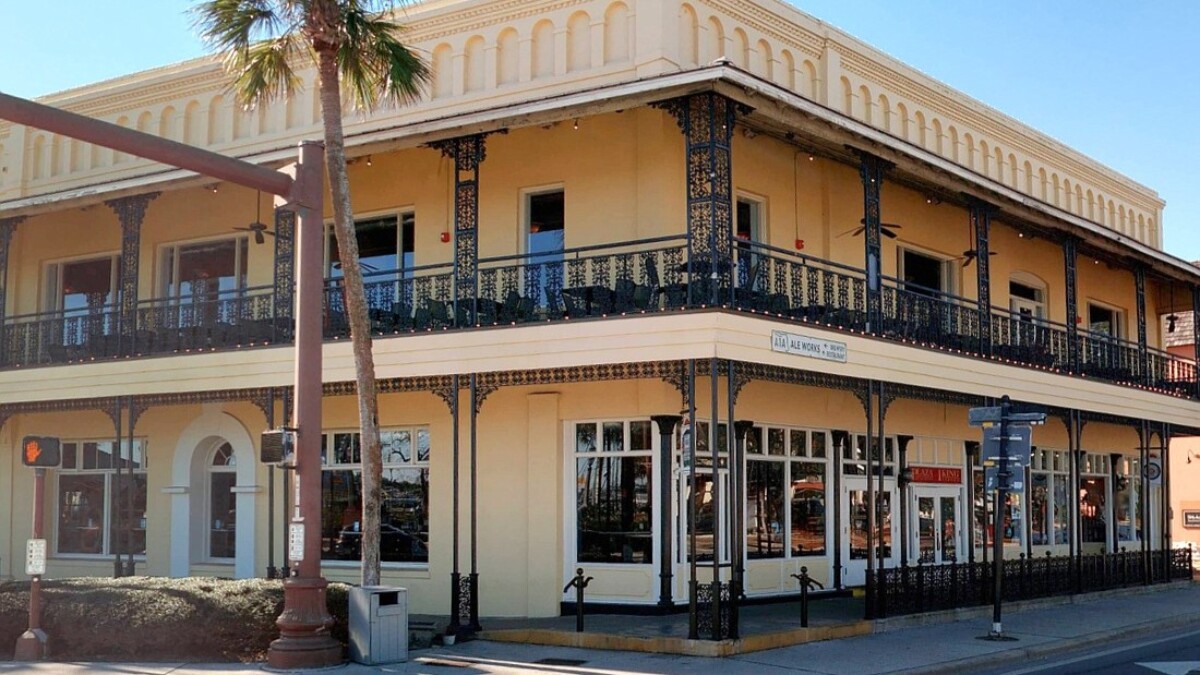Most of them stand abandoned, their Gothic angles, Art Deco curves or classic brick arches awash in Jacksonville sunshine as traffic — and history — pass them by.
Others are still occupied by students and teachers, their future unknown as they could be closed due to depressed enrollment.
The Jacksonville History Center (aka Jacksonville Historical Society) has placed all of them on its annual list of the city’s most endangered historic buildings — 27 from Downtown to Atlantic Beach.
The historical society issues the list every year in observance of National Historic Preservation Month. This year, they range from a scorched and graffiti-covered 107-year-old school in the Brooklyn community to an ornate mansion in Springfield. The list also includes the Laura Street Trio Downtown, consisting of the Florida Life and Bisbee buildings and the Old Florida National Bank.
Alan Bliss, historical society CEO, said he’s learned a “credible deal” to restore the Trio buildings is on the table.
“We may see this project back on the (Downtown Investment Authority’s) agenda at its regular meeting in June,” Bliss said. “It is one of the heaviest lifts that there is in Jacksonville in terms of an historic preservation project, partly because it is so complicated, partly because being faithful to the original architecture and design imposes lots of challenges for an adaptive 21st century use. And partly, because it is so much money.”
The Trio’s bank building was designed by architect Edwin H. Glidden in the Classical Revival style and built in 1902. The Bisbee Building was designed by Henry J. Klutho in the Prairie style and opened in 1909, and the same architect did the Florida Life Building, the only one of the Trio that faces Laura Street.
After the Trio stood vacant for years, the city bought it in 2002, and the Atkins Group began renovations nine years later, although efforts stalled as the developer sought additional funds from the city to complete the project. Now reports of a renewed deal leave Bliss “hopeful and encouraged.”
“Those three buildings symbolized Jacksonville’s renaissance in the years after the Great Fire of the early decades of the 20th century,” Bliss said. “And in the 21st century, for this city to be able to see that restored to a sustainable use, that will symbolize Downtown’s renaissancey. For those reasons, we think it really is an important project to support.”
But so many other properties still face decay or even demolition that will erase another part of the culture, history and life stories that form Jacksonville, Bliss said.

Snyder Memorial Methodist Church, next to James Weldon Johnson Park and City Hall, was rebuilt after the 1901 Fire. Designed by architect J.H.W. Hawkins, it features detailed carved stone and arching stained-glass windows. During Ax Handle Saturday, the church became a refuge for Black civil rights demonstrators under attack by a white mob. Vacant for years, it is owned by the city now.
The endangered list also includes a number of schools, one that has remained vacant for decades and subject to fire damage and graffiti.
The Annie Lytle Public School on Peninsular Place was built in 1917, designed by architect Rutledge Holmes. It overlooked Riverside Park before the Interstate 10/Interstate 95 interchange was built right in front of it. Now the windows around its Neo-Classic portico with Doric columns at the entrance are boarded up, with fire damage and graffitti inside and out after it was vacated in the 1970s.

The Annie Lytle Preservation Group worked to find ways to preserve and reuse the building, which was declared a historic landmark. But the damage it has faced in recent years might mean it may never be restored to any use, Bliss admits.
“It is true that most informed opinions states that that building is pretty far gone,” he said. “On the other hand, we have seen buildings that are far gone come back. It takes money, the old saying goes. If there is enough money an a sustainable path for adaptive reuse, it could be done.”
Then there are eight currently active schools on the society’s endangered list. All of them are on a list of 37 that a consultant suggested the Duval County Public Schools close due to declines in enrollment.
For years, the school district has faced challenges on how to use those older schools more efficiently, buildings built when there were neighborhoods of students who lived within walking distance, Bliss said. In these modern days, they still have value, he said.
“These are places that (hold) generations upon generations of memories and lived experiences that people experienced during the most formative periods of their lives,” Bliss said. “So the challenge for Duval County’s public schools, and especially the ones on our endangered list, are continuing to grow, and our job as history-minded citizens is to try to help find ways for a sustainable use for these buildings in the 21st Century.”
These are the endangered schools on the list:
- Atlantic Beach Elementary School on Sherry Drive, built in 1940, designed by Max Worthley.
- West Riverside Elementary School on Herschel Street, built in 1911, with additions designed by Klutho in 1916 and 1922. It is inside a registered historic district, with protection from demolition.
- Fishweir Elementary School on Herschel Street, built in 1917 in a former cow pasture, initial design by O.P. Woodstock, with a 1926 addition done by Klutho.
- Annie Morgan Elementary School at St. Clair Street, opened in 1916.
- Whitehouse Elementary School on General Avenue, opened in 1951, more classrooms added between 1955 and 1968, with renovations in 1987 and 2011.
- Ortega Elementary School on Baltic Street, designed by Victor Mark and Leroy Sheftall in the Mediterranean Revival Style, then built in 1923.
These endangered schools have already closed:
- Brentwood Elementary School, built in 1915 and closed in 2021.
- Henry Kite Elementary School on Lem Turner Road, built in 1929 as Riverview Elementary and closed last year.
The school district is holding community meetings to hear public comment about changes to its Master Facilities Plan, its blueprint for renovating or rebuilding schools. No binding decisions are expected until at least September.
Other buildings on the society’s list of endangered buildings range from churches to office buildings, some of them in danger of being erased from Jacksonville’s historic tableau, Bliss said.
“These buildings are on our endangered list for a good reason: They are seriously threatened by different circumstance, either by sustainability, adaptability or deteriorating condition,” he said. “I come back to the prospects of reviving a building that is in bad shape. It takes money, but with enough money and patience, time and a passion for preservation, any of these buildings can be brought back.”
Endangered churches:
- Mount Olive A.M.E. Church on Pippin Street.
- Mount Calvary Baptist Church on Spruce Street.
Endangered residential buildings:
- Wesley Manor facility on Florida 13 in Fruit Cove, designed by Jacksonville architect Robert Broward and designated for demolition and replacement of almost all of the Broward structures.
- Two Victorian-style two-story duplexes on Jefferson Street, built in 1906 and now boarded up.
- A post-Civil War cottage on Chelsea Street, the last of small homes built in the Brooklyn community for Black Union Army veterans after the war.
- Horace Drew Mansion on Third Street in Springfield, built around 1909 and badly deteriorated. A restoration stalled in recent years, the society said.
Endangered businesses:
- Scottish Rite Masonic temple on Hubbard Street, an Egyptian Revival style building opened in 1926 and in serious need of repair.
- Independent Life Building on West Duval Street, completed in 1955 and designated a local landmark in 2020. Part of it will be converted to 135 apartments.
- Ambassador Hotel on North Julia Street, completed in 1923, receiving National Historic designation in 1983. It is under renovation as a LaQuinta Inn, with its exterior facade to remain.
- Former Arlington Federal Savings and Loan on University Boulevard North, built in 1961, designated as a local historic landmark.
- Eartha White Youth Recreation Center on Moncrief Road, built in 1938, one of few buildings remaining from the period when Moncrief Springs was a popular resort for the Black community.
- Claude Nolan Cadillac building on North Main Street, built in 1912, a Prairie-style building designed by Klutho.
- Former JAX Brewing Co. on West 16th Street, built in 1913 and the second brewery ever opened in the state.
- Former JEA building on West Church Street, built in 1963 and listed on the National Register of Historic Places. It is for sale.
Endangered public buildings:
- Old Duval County Armory on North Market Street, completed in 1916, a fortress-like building that has been empty for years.
- Genovar’s Hall on West Ashley Street, built around 1895 to house a grocery, then a saloon in the heart of LaVilla’s Black community. Gutted as part of a failed restoration and in urgent need of restoration, the society said.







